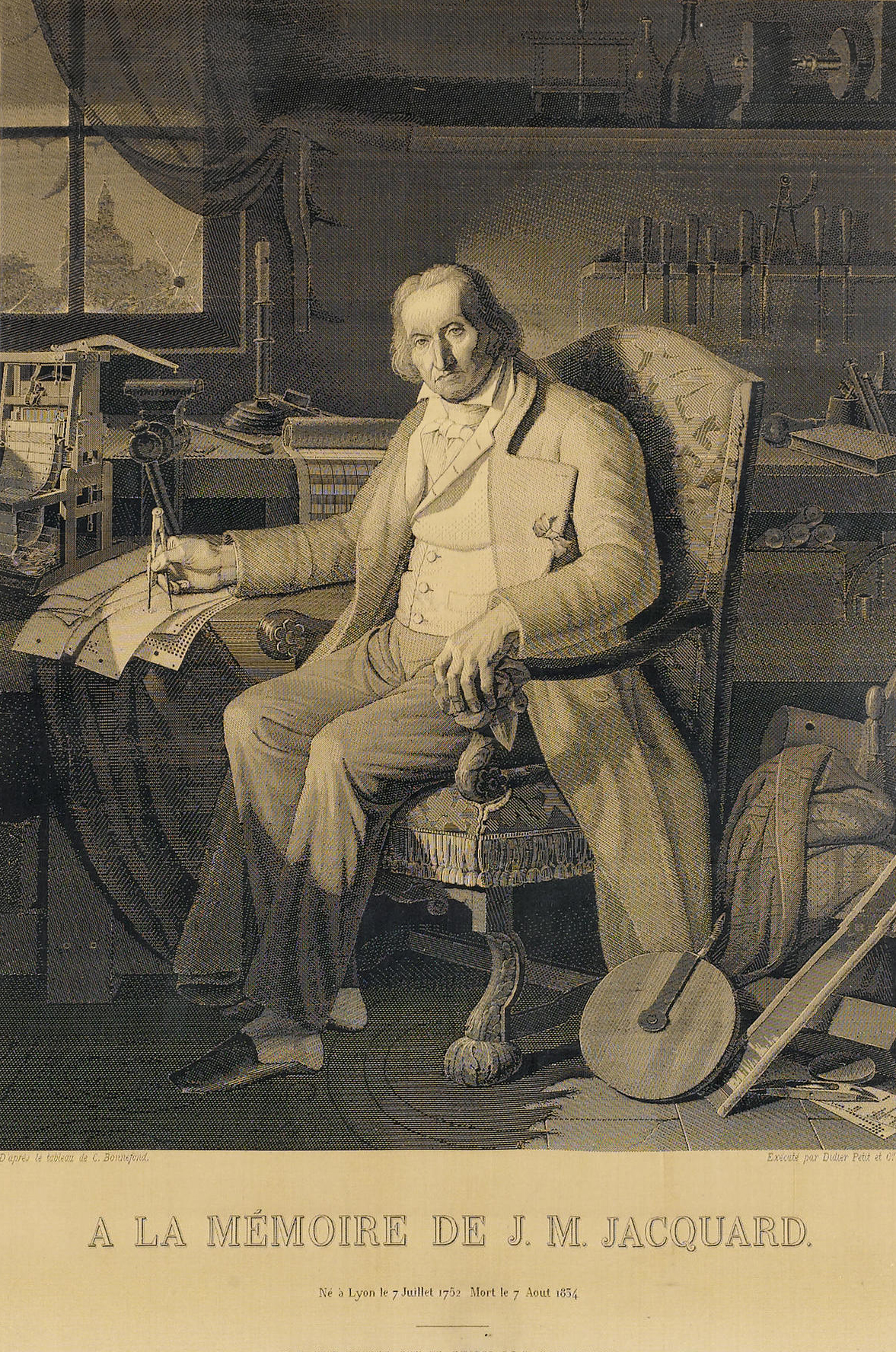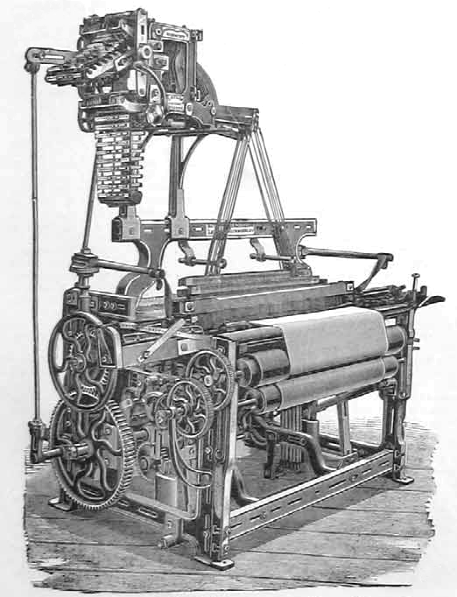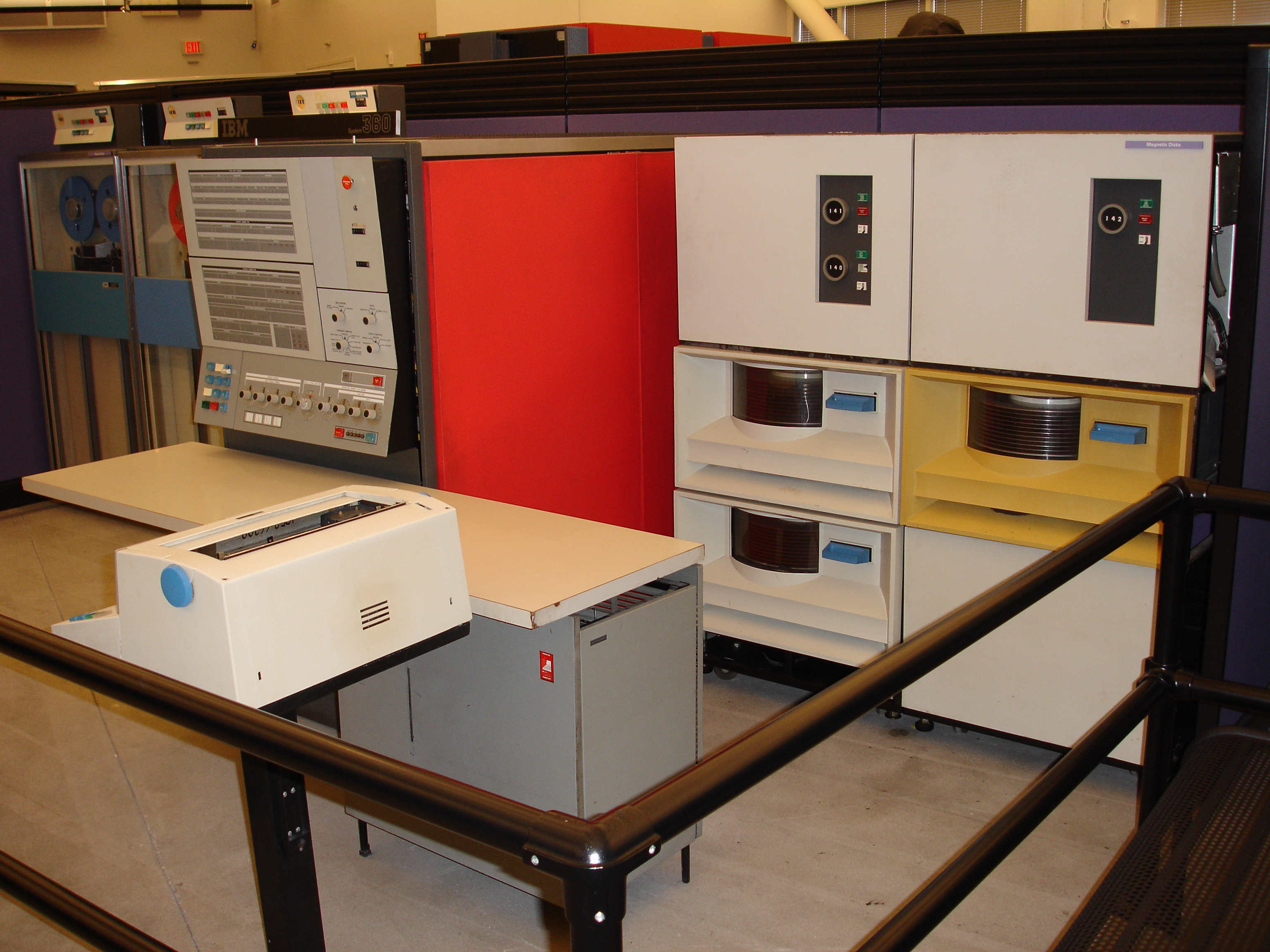|
Janice Lourie
Janice Richmond "Jan" Lourie (born July 9, 1930) is an American computer scientist and graphic artist. In the late 1960s she was a pioneer in CAD/CAM (computer-aided design/computer-aided manufacture) for the textile industry. She is best known for inventing a set of software tools that facilitate the textile production stream from artist to manufacturer. For the Graphical Design Of Textiles process she was granted IBM's first software patent. Other projects, in differing disciplines, share the focus on graphic representation. She returns throughout an ongoing career to the stacked two-dimensional tabular arrays of textiles and computer graphics, and the topological structures of interrelated data. Education Lourie studied music theory and history at the Longy School of Music in Cambridge Massachusetts. Rosario Mazzeo was her clarinet teacher. She performed in chamber music concerts in the tapestry gallery series at the Boston Museum of Fine Arts and with amateur orchestras and ... [...More Info...] [...Related Items...] OR: [Wikipedia] [Google] [Baidu] |
Longy School Of Music Of Bard College
Longy School of Music of Bard College is a private music school in Cambridge, Massachusetts. Founded in 1915 as the Longy School of Music, it was one of the four independent degree-granting music schools in the Boston region along with the New England Conservatory, Berklee College of Music, and Boston Conservatory. In 2012, the institution merged with Bard College to become Longy School of Music of Bard College.Longy School of Music (April 2, 2012)Press release: "Longy School of Music Becomes a Part of Bard College" Retrieved 3 April 2012. As of the 2018–19 academic year, the conservatory has 300 students in its degree programs from 35 states and 23 countries. History Longy School of Music was founded in Boston in 1915 by Georges Longy, a French-born oboist and graduate of the Paris Conservatory who had joined the Boston Symphony Orchestra in 1898. Upon his retirement in 1925, his daughter, Renée Longy-Miquelle, succeeded him as director. She recruited several of Georges Lon ... [...More Info...] [...Related Items...] OR: [Wikipedia] [Google] [Baidu] |
General Motors
The General Motors Company (GM) is an American Multinational corporation, multinational Automotive industry, automotive manufacturing company headquartered in Detroit, Michigan, United States. It is the largest automaker in the United States and was the largest in the world for 77 years before losing the top spot to Toyota in 2008. General Motors operates manufacturing plants in eight countries. Its four core automobile brands are Chevrolet, Buick, GMC (automobile), GMC, and Cadillac. It also holds interests in Chinese brands Wuling Motors and Baojun as well as DMAX (engines), DMAX via joint ventures. Additionally, GM also owns the BrightDrop delivery vehicle manufacturer, GM Defense, a namesake Defense vehicles division which produces military vehicles for the United States government and military; the vehicle safety, security, and information services provider OnStar; the auto parts company ACDelco, a GM Financial, namesake financial lending service; and majority ownership in t ... [...More Info...] [...Related Items...] OR: [Wikipedia] [Google] [Baidu] |
Living People
Related categories * :Year of birth missing (living people) / :Year of birth unknown * :Date of birth missing (living people) / :Date of birth unknown * :Place of birth missing (living people) / :Place of birth unknown * :Year of death missing / :Year of death unknown * :Date of death missing / :Date of death unknown * :Place of death missing / :Place of death unknown * :Missing middle or first names See also * :Dead people * :Template:L, which generates this category or death years, and birth year and sort keys. : {{DEFAULTSORT:Living people 21st-century people People by status ... [...More Info...] [...Related Items...] OR: [Wikipedia] [Google] [Baidu] |
1930 Births
Year 193 ( CXCIII) was a common year starting on Monday (link will display the full calendar) of the Julian calendar. At the time, it was known as the Year of the Consulship of Sosius and Ericius (or, less frequently, year 946 ''Ab urbe condita''). The denomination 193 for this year has been used since the early medieval period, when the Anno Domini calendar era became the prevalent method in Europe for naming years. Events By place Roman Empire * January 1 – Year of the Five Emperors: The Roman Senate chooses Publius Helvius Pertinax, against his will, to succeed the late Commodus as Emperor. Pertinax is forced to reorganize the handling of finances, which were wrecked under Commodus, to reestablish discipline in the Roman army, and to suspend the food programs established by Trajan, provoking the ire of the Praetorian Guard. * March 28 – Pertinax is assassinated by members of the Praetorian Guard, who storm the imperial palace. The Empire is a ... [...More Info...] [...Related Items...] OR: [Wikipedia] [Google] [Baidu] |
Herman Goldstine
Herman Heine Goldstine (September 13, 1913 – June 16, 2004) was a mathematician and computer scientist, who worked as the director of the IAS machine at Princeton University's Institute for Advanced Study and helped to develop ENIAC, the first of the modern electronic digital computers. He subsequently worked for many years at IBM as an IBM Fellow, the company's most prestigious technical position. Early life Herman Heine Goldstine was born in Chicago in 1913 to Jewish parents. He attended the University of Chicago, where he joined the Phi Beta Kappa fraternity, and graduated with a degree in Mathematics in 1933, a master's degree in 1934, and a PhD in 1936. For three years he was a research assistant under Gilbert Ames Bliss, an authority on the mathematical theory of external ballistics. Career Early career In 1939 Goldstine began a teaching career at the University of Michigan, until the United States' entry into World War II, when he joined the U.S. Army. BRL and ... [...More Info...] [...Related Items...] OR: [Wikipedia] [Google] [Baidu] |
HemisFair '68
HemisFair '68 was the official 1968 World's Fair (or International Exposition) held in San Antonio, Texas, from April 6 through October 6, 1968. Local businessman and civic leader, Jerome K. Harris Sr., coined the name HemisFair and conceived the idea for the fair, hoping it would unite all the cultures that comprise San Antonio and solidify the city's reputation as a cultural and historic destination. With help from commisioner Henry B. Gonzales and other San Antonio leaders, the fair materialized and helped transform the city from a cowtown to one of the largest cities in the country. The theme of the fair was "The Confluence of Civilizations in the Americas", celebrating the many nations which settled the region. The fair was held in 1968 to coincide with the 250th anniversary of the founding of San Antonio in 1718. More than thirty nations and fifteen corporations hosted pavilions at the fair. The Bureau International des Expositions (BIE) which oversees World's Fairs and Expo ... [...More Info...] [...Related Items...] OR: [Wikipedia] [Google] [Baidu] |
Jacquard Loom
The Jacquard machine () is a device fitted to a loom that simplifies the process of manufacturing textiles with such complex patterns as brocade, damask and matelassé. The resulting ensemble of the loom and Jacquard machine is then called a Jacquard loom. The machine was patented by Joseph Marie Jacquard in 1804, based on earlier inventions by the Frenchmen Basile Bouchon (1725), Jean Baptiste Falcon (1728), and Jacques Vaucanson (1740). The machine was controlled by a "chain of cards"; a number of punched cards laced together into a continuous sequence. Multiple rows of holes were punched on each card, with one complete card corresponding to one row of the design. Both the Jacquard process and the necessary loom attachment are named after their inventor. This mechanism is probably one of the most important weaving innovations as Jacquard shedding made possible the automatic production of unlimited varieties of complex pattern weaving. The term "Jacquard" is not specific or ... [...More Info...] [...Related Items...] OR: [Wikipedia] [Google] [Baidu] |
Dobby Loom
A dobby loom, or dobbie loom, is a type of floor loom that controls all the warp threads using a device called a dobby. Dobbies can produce more complex fabric designs than tappet looms but are limited in comparison to Jacquard looms. Dobby looms first appeared around 1843, roughly 40 years after Joseph Marie Jacquard invented the Jacquard device that can be mounted atop a loom to lift the individual heddles and warp threads. The word ''dobby'' is a corruption of "draw boy," which refers to the weaver's helpers who used to control the warp thread by pulling on draw threads. A dobby loom is an alternative to a treadle loom. Both are floor looms in which every warp thread on the loom is attached to a single shaft using a device called a heddle. A shaft is sometimes known as a harness. Each shaft controls a set of threads. Raising or lowering several shafts at the same time gives a huge variety of possible sheds (gaps) through which the shuttle containing the weft thread can b ... [...More Info...] [...Related Items...] OR: [Wikipedia] [Google] [Baidu] |
IBM System/360
The IBM System/360 (S/360) is a family of mainframe computer systems that was announced by IBM on April 7, 1964, and delivered between 1965 and 1978. It was the first family of computers designed to cover both commercial and scientific applications and to cover a complete range of applications from small to large. The design distinguished between architecture and implementation, allowing IBM to release a suite of compatible designs at different prices. All but the only partially compatible Model 44 and the most expensive systems use microcode to implement the instruction set, which features 8-bit byte addressing and binary, decimal, and hexadecimal floating-point calculations. The System/360 family introduced IBM's Solid Logic Technology (SLT), which packed more transistors onto a circuit card, allowing more powerful but smaller computers to be built. The slowest System/360 model announced in 1964, the Model 30, could perform up to 34,500 instructions per second, with mem ... [...More Info...] [...Related Items...] OR: [Wikipedia] [Google] [Baidu] |
IBM 2250
The IBM 2250 Graphics Display Unit was a vector graphics display system by IBM for the System/360; the Model IV attached to the IBM 1130. Overview The IBM 2250 Graphics Display Unit was announced with System/360 in 1964. A complete 2250 III system with controller cost around $280,000 in 1970, though up to 4 displays could share a single controller, reducing the cost per display by up to 40%. A display list of line segments (vectors) on a 1024 by 1024 grid was stored in computer's memory or an optional buffer on the 2250 and repainted on the 2250's CRT up to 40 times per second. The computer altered the display by changing the display list. Characters were built of line segments specified by display list subroutines. Thus any character set or font could be displayed, although fonts were generally extremely simplified for performance reasons. An optional character-generator feature on all models provided predefined fonts of 63 characters to simplify display of alphanumeric inform ... [...More Info...] [...Related Items...] OR: [Wikipedia] [Google] [Baidu] |
Joint Computer Conference
The Joint Computer Conferences were a series of computer conferences in the United States held under various names between 1951 and 1987. The conferences were the venue for presentations and papers representing "cumulative work in the omputerfield." Originally a semi-annual pair, the Western Joint Computer Conference (WJCC) was held annually in the western United States, and a counterpart, the Eastern Joint Computer Conference (EJCC), was held annually in the eastern US. Both conferences were sponsored by an organization known as the '' National Joint Computer Committee'' (NJCC), composed of the Association for Computing Machinery (ACM), the American Institute of Electrical Engineers (AIEE) Committee on Computing Devices, and the Institute of Radio Engineers (IRE) Professional Group on Electronic Computers. In 1962 the American Federation of Information Processing Societies (AFIPS) took over sponsorship and renamed them Fall Joint Computer Conference (FJCC) and Spring Joint Co ... [...More Info...] [...Related Items...] OR: [Wikipedia] [Google] [Baidu] |
Computer Monitor
A computer monitor is an output device that displays information in pictorial or textual form. A discrete monitor comprises a visual display, support electronics, power supply, housing, electrical connectors, and external user controls. The display in modern monitors is typically an LCD with LED backlight, having by the 2010s replaced CCFL backlit LCDs. Before the mid- 2000s, most monitors used a CRT. Monitors are connected to the computer via DisplayPort, HDMI, USB-C, DVI, VGA, or other proprietary connectors and signals. Originally, computer monitors were used for data processing while television sets were used for video. From the 1980s onward, computers (and their monitors) have been used for both data processing and video, while televisions have implemented some computer functionality. In the 2000s, the typical display aspect ratio of both televisions and computer monitors has changed from 4:3 to 16:9. Modern computer monitors are mostly interchangeable with ... [...More Info...] [...Related Items...] OR: [Wikipedia] [Google] [Baidu] |







